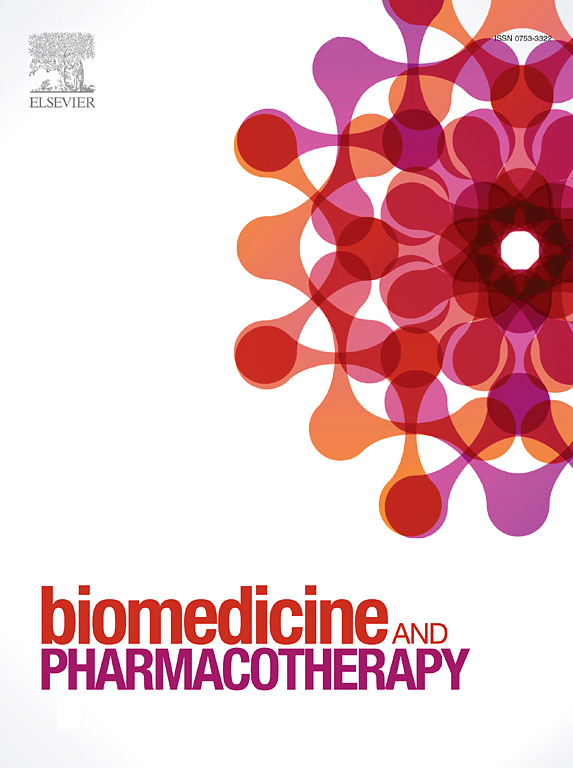The cell cycle inhibitor p21CIP1 is essential for irinotecan-induced senescence and plays a decisive role in re-sensitization of temozolomide-resistant glioblastoma cells to irinotecan
IF 6.9
2区 医学
Q1 MEDICINE, RESEARCH & EXPERIMENTAL
引用次数: 0
Abstract
Background and purpose
Standard of care for glioblastomas includes radio-chemotherapy with the monoalkylating compound temozolomide. Temozolomide induces primarily senescence, inefficiently killing glioblastoma cells. Recurrences are inevitable. Although recurrences presumably arise from cells evading/escaping TMZ-induced senescence, becoming resistant, they are often again treated with TMZ. As an alternative treatment, irinotecan could be used. Our aim was to examine to what extent and conditions the topoisomerase I inhibitor irinotecan induces senescence and to analyze the underlying mechanism.
Results
Multiple glioblastoma lines with different genetic signatures for p53, p21CIP1, p16INK4A, p14ARF, and PTEN were used. By means of LN229 glioblastoma clones which escaped from temozolomide-induced senescence, thus, being potentially recurrence-forming, we show that this escape is accompanied by increased p21CIP1 protein levels in temozolomide-unexposed senescence-evading clones and inability of temozolomide to induce p21CIP1. In contrast, irinotecan was still able to induce p21CIP1 and could elevate senescence and cell death. In combination with the senolytic drug BV6, irinotecan-induced senescence was significantly reduced. Differential response clusters were also observed in paired samples of newly diagnosed and recurrent patients’ tumors. This can partially explain a significantly prolonged progression-free time until surgery for recurrence in patients additionally treated with irinotecan after temozolomide consolidation and upon the first onset of recurrence.
Conclusions
p21CIP1 is essentially involved in induction and maintenance of irinotecan-induced senescence. Neither p16INK4A, p14ARF, nor PTEN contribute to senescence, if p21CIP1 cannot be induced. Based on the positive results of the irinotecan/BV6 treatment, combatting recurrent glioblastomas by targeting senescence cell antiapoptotic pathways (SCAPs) should be considered.
细胞周期抑制剂 p21CIP1 对伊立替康诱导的衰老至关重要,并在耐替莫唑胺的胶质母细胞瘤细胞对伊立替康的再敏感化过程中起着决定性作用。
背景和目的:治疗胶质母细胞瘤的标准方法包括使用单烷基化化合物替莫唑胺进行放射化学治疗。替莫唑胺主要诱导衰老,不能有效杀死胶质母细胞瘤细胞。复发是不可避免的。虽然复发可能是由于细胞逃避/逃脱了替莫唑胺诱导的衰老,产生了抗药性,但它们通常会再次接受替莫唑胺治疗。伊立替康可作为替代治疗方法。我们的目的是研究拓扑异构酶I抑制剂伊立替康诱导衰老的程度和条件,并分析其潜在机制:结果:我们使用了具有不同 p53、p21CIP1、p16INK4A、p14ARF 和 PTEN 遗传特征的多个胶质母细胞瘤系。我们通过从替莫唑胺诱导的衰老中逃脱的 LN229 型胶质母细胞瘤克隆(因此有可能复发),发现这种逃脱伴随着替莫唑胺未暴露的衰老逃避克隆中 p21CIP1 蛋白水平的升高,以及替莫唑胺无法诱导 p21CIP1。相比之下,伊立替康仍能诱导 p21CIP1,并能促进衰老和细胞死亡。与衰老溶解药物 BV6 联合使用,伊立替康诱导的衰老显著减少。在新诊断和复发患者的肿瘤配对样本中也观察到了不同的反应群。结论:p21CIP1在本质上参与了伊立替康诱导的衰老的诱导和维持。如果 p21CIP1 不能被诱导,则 p16INK4A、p14ARF 和 PTEN 都不会促进衰老。基于伊立替康/BV6 治疗的积极结果,应考虑通过靶向衰老细胞抗凋亡通路(SCAPs)来对抗复发性胶质母细胞瘤。
本文章由计算机程序翻译,如有差异,请以英文原文为准。
求助全文
约1分钟内获得全文
求助全文
来源期刊
CiteScore
11.90
自引率
2.70%
发文量
1621
审稿时长
48 days
期刊介绍:
Biomedicine & Pharmacotherapy stands as a multidisciplinary journal, presenting a spectrum of original research reports, reviews, and communications in the realms of clinical and basic medicine, as well as pharmacology. The journal spans various fields, including Cancer, Nutriceutics, Neurodegenerative, Cardiac, and Infectious Diseases.

 求助内容:
求助内容: 应助结果提醒方式:
应助结果提醒方式:


